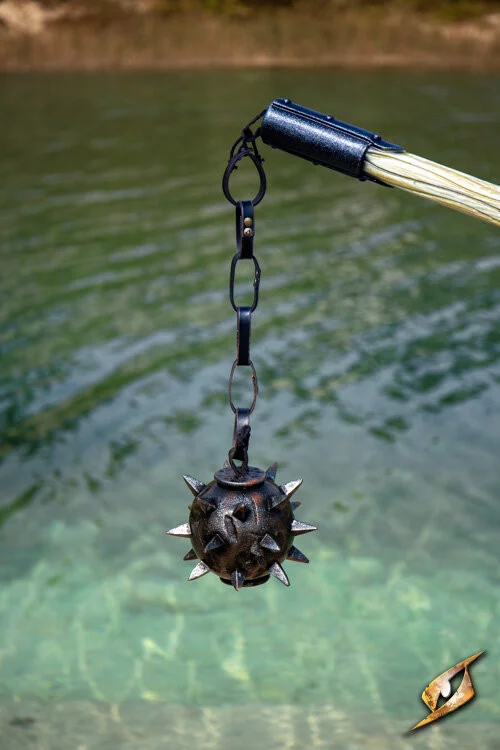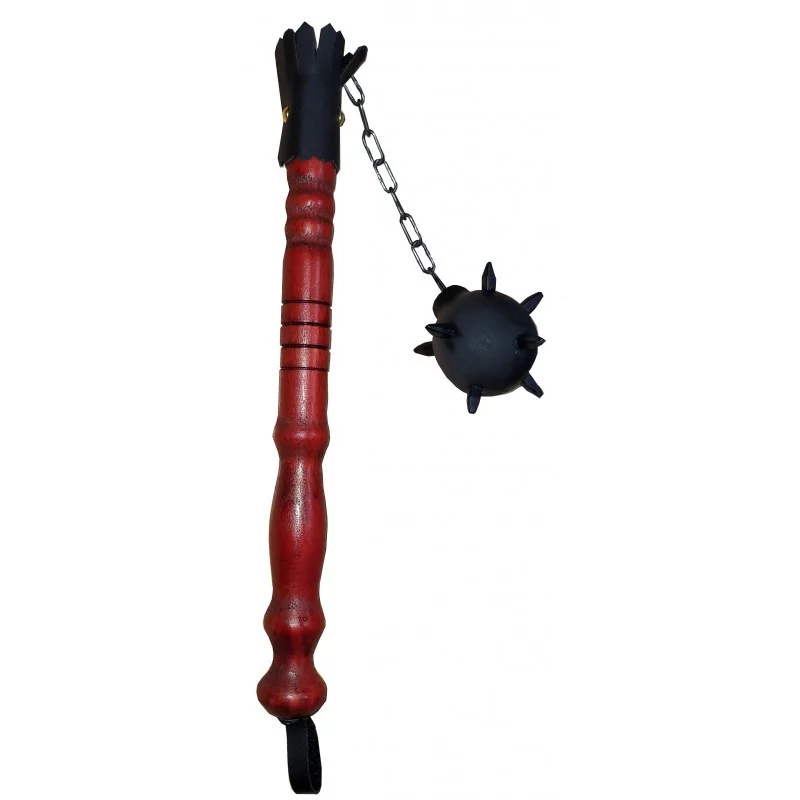What is a Mangual?
The **mangual**, also known as a chain mace or flail, is a medieval weapon that captured the imagination of many due to its imposing design and utility on the battlefield. This instrument, whose origins lie in the evolution of a simple agricultural tool, became a powerful weapon of war that left its mark on history.

Origin and Innovation of the Mangual
The mangual has its roots in the "mayal," an agricultural tool used to separate grain from the husk. The transformation of the mayal into a weapon occurred by attaching a heavy iron mace to a wooden handle via a chain. This configuration granted the mangual a unique flexibility to bypass opponents' shields and strike with devastating force.
- Flexibility and Strength: The chain allowed the mace to swing over enemy shields, providing a clear tactical advantage.
- Handling and Danger: Using a mangual required training, not only for effective maneuvering but also to avoid personal injury due to its dangerous nature.
The Mangual in Medieval Battlefields
Used by both foot soldiers and knights, the mangual was the preferred choice against plate armor and defensive shields, thanks to the extra length provided by the chain. This weapon was particularly effective in close combat, where the strength and flexibility of the mangual could be maximized.
- Chains and Mace: It was common for the handle to have multiple chains, each ending in a spiked mace, thereby increasing its impact capability.
- Comparison with Other Weapons: Although similar in appearance to spiked maces, known in Europe as "morning stars," the mangual was distinguished by its chain, setting it apart from the more rigid flail.

Geographic Presence and Historical Impact
The use of the mangual was prominent in regions such as Germany and Switzerland, although it does not seem to have had the same popularity in France. Its presence in armies reflected the need for effective weapons in close combat, where the ability to maneuver and block with agility was essential.
Modern Manufacturing of the Mangual
Today, it is possible to find resources that guide how to make a mangual at home, using materials such as motorcycle sprockets, chains, and pipes. Although these are usually used for recreational or educational purposes, they reflect the ongoing interest in this fascinating war instrument.
| Feature | Description |
|---|---|
| Origin | Derived from the agricultural mayal |
| Components | Wooden handle, chain, iron mace with spikes |
| Uses | Close combat, attacks against armor and shields |
| Regions of Use | Germany, Switzerland |
| Modernity | Homemade manufacturing available |
In essence, the mangual is a fusion of design and function, combining the deadly power of a mace with the adaptability of a chain. This weapon, which once dominated medieval battlefields, remains a subject of study and admiration for its uniqueness and effectiveness.




























